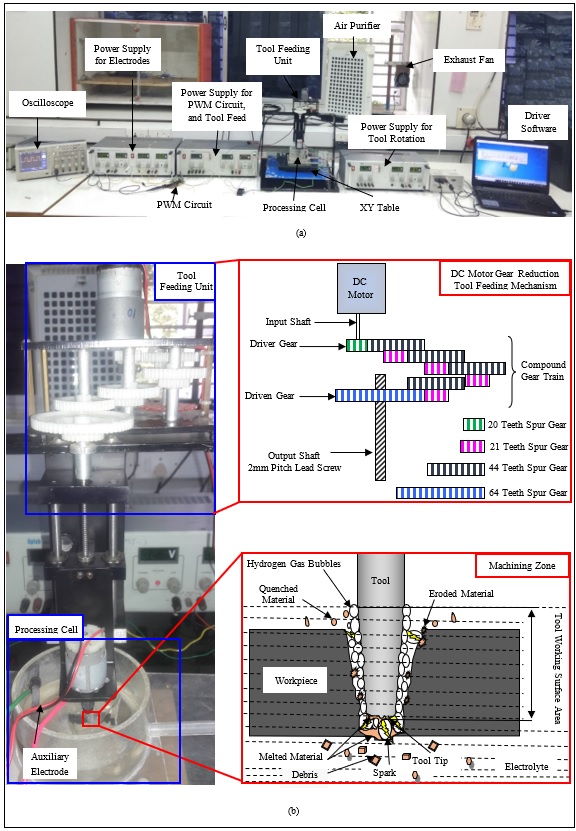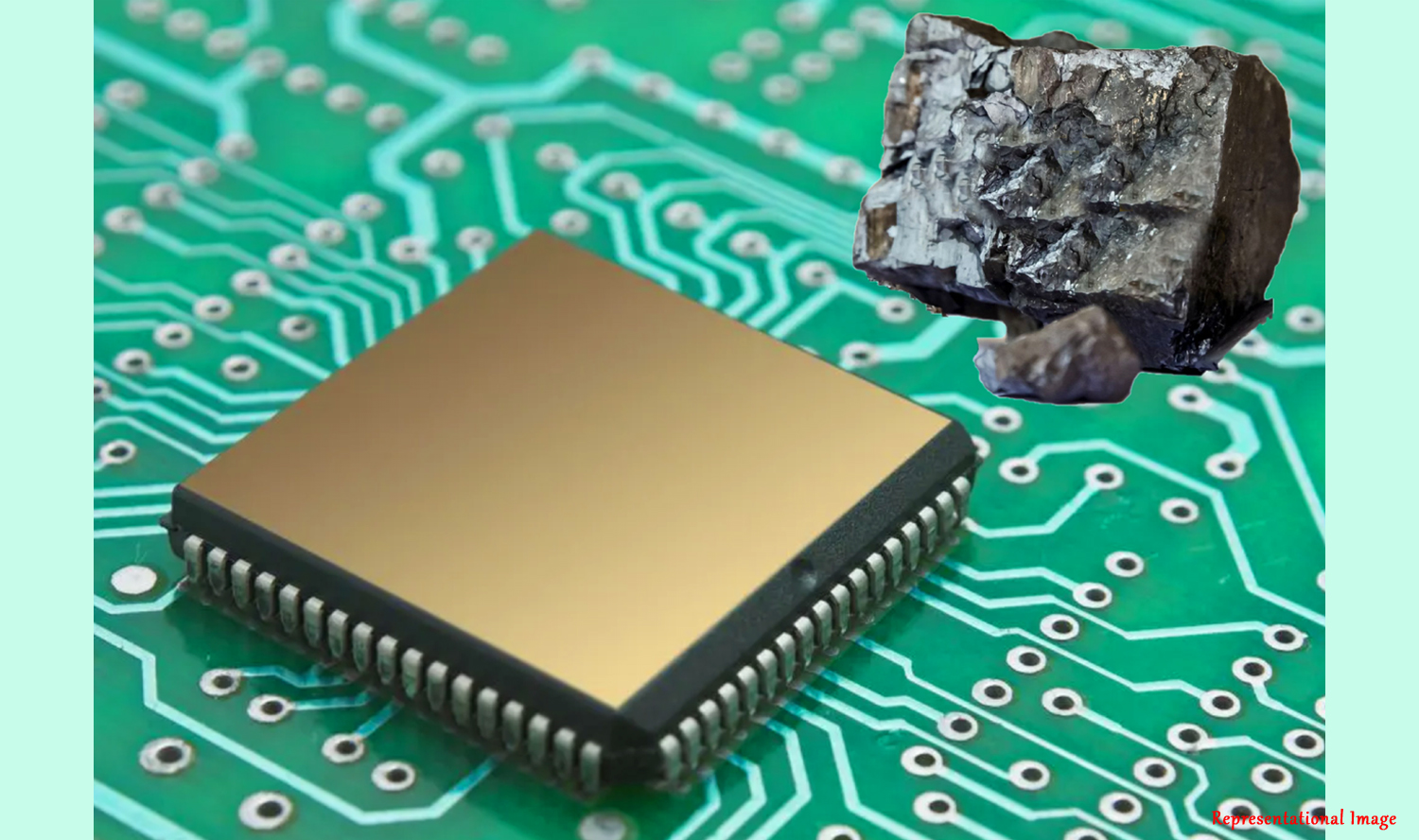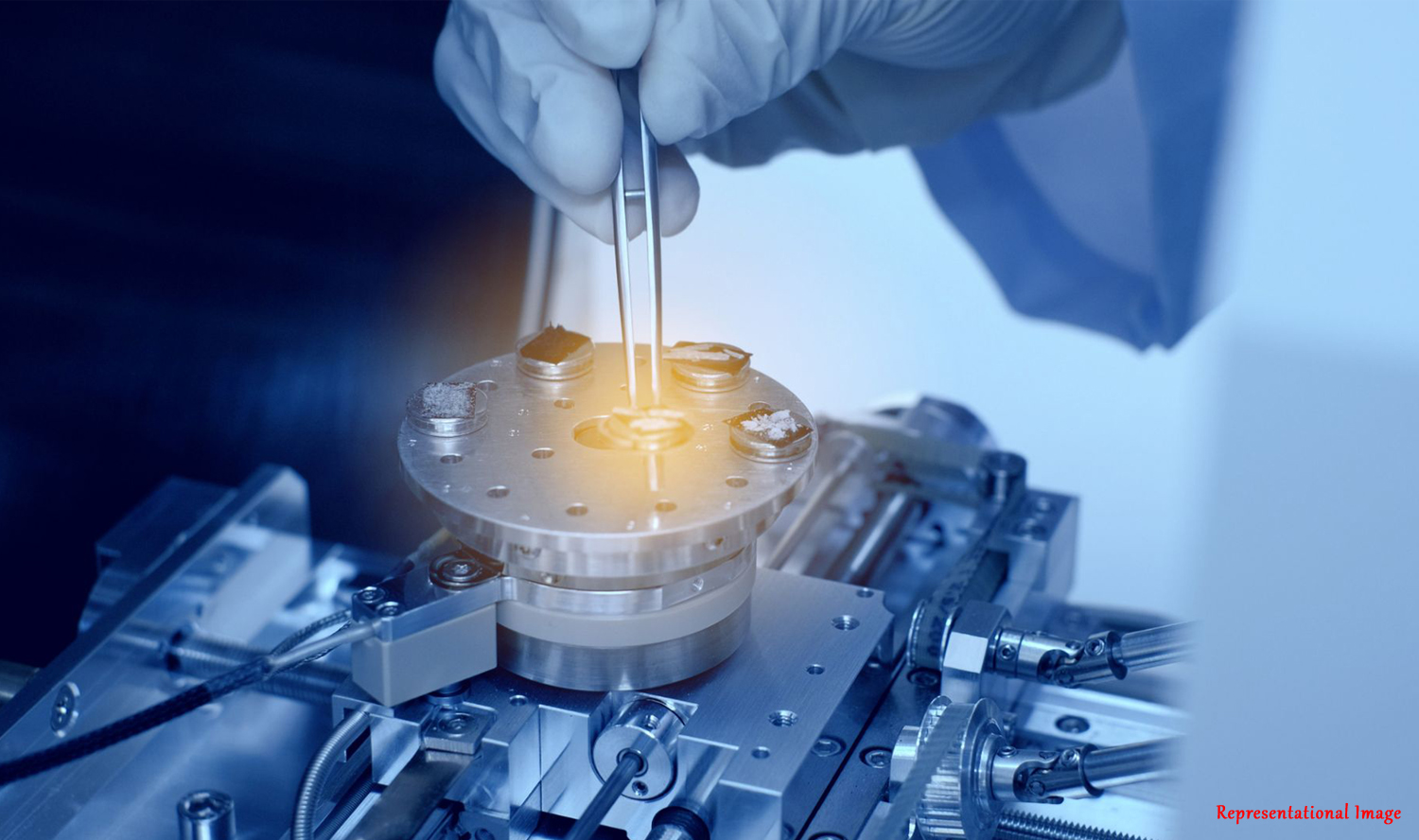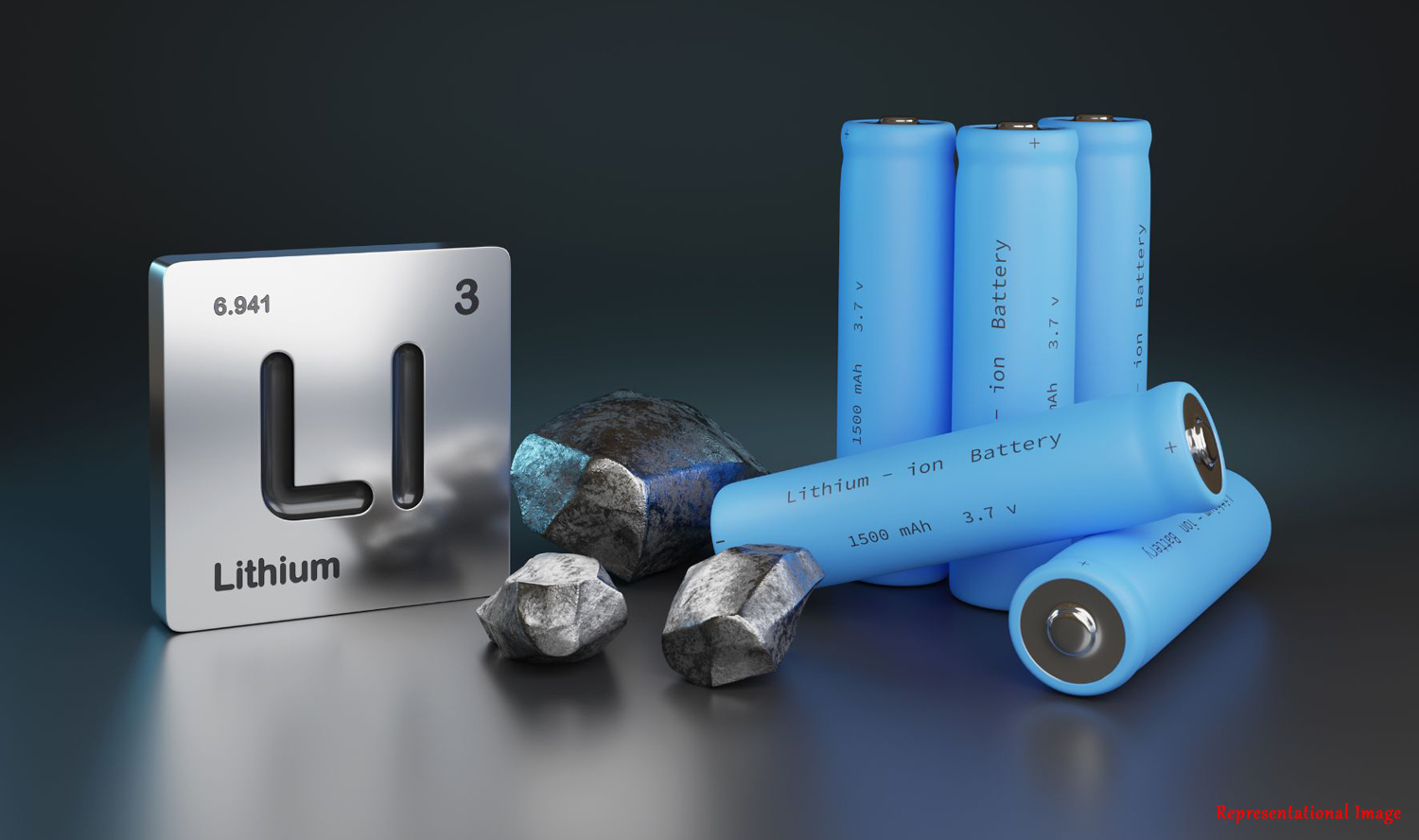
Borosilicate glass nanoparticles have a wide variety of uses. This is because borosilicate glass has a wide range of special properties such as optical clarity, lower electrical conductivity, lower thermal conductivity, biocompatibility, transparency, and chemical inertness. Hence, the generation of borosilicate nanoparticles would widen the scope of its application.
To accomplish this, a non-conventional hybrid process known as Micro-Electro Chemical Discharge Machining (Micro-ECDM) is used in the experiment conducted by Professor Somashekhar Hiremath and Mrs. Bindu Madhavi J. at IIT Madras.
Micro-ECDM process is basically the combination of Electro Discharge Machining process, wherein melting and evaporation is the base and it contributes 95% in material removal rate, On the other hand, in the Electro Chemical Machining process, there is a chemical etching which is the base and it contributes only 5% in material removal rate. So, the material removal is due to the combined effect of melting, vaporization and etching. This mechanism has proved its potential to generate features like holes, channels, textures, and letterings on various engineering materials like stainless steel, copper, silver, sodalime glass, quartz glass, silicon wafers, aluminium oxide etc.
Although Micro-ECDM has been used for the generation of conducting nanoparticles by few researchers by using workpiece material (anode) or metal salt solution from which respective nanoparticles are generated. A schematic diagram of the Micro-ECDM cell is shown below:
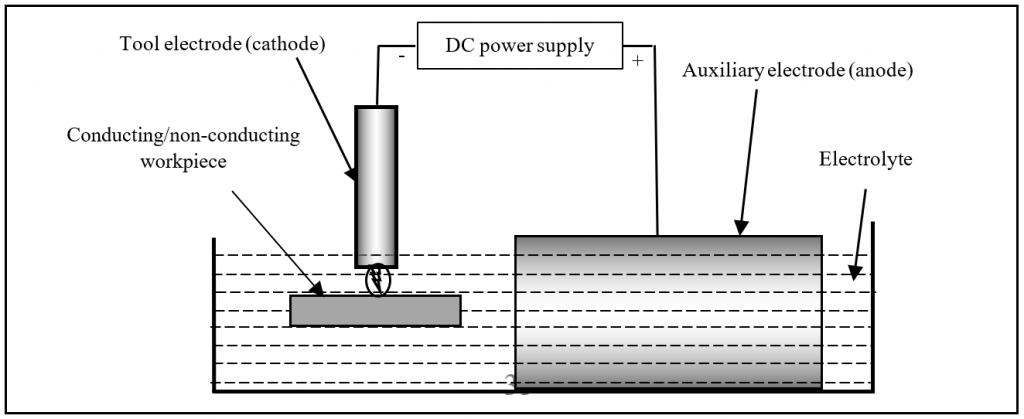
Although there is a vast availability of research data on micro-ECDM machining of features on non-conducting material, particularly in glass, it still lacks in the generation of its nanoparticles.
Because of the importance of borosilicate glass nanoparticles, the present work aims to develop an in-house Micro-ECDM setup with a tool feeding mechanism, and a processing cell to carry out experimentation to generate borosilicate glass nanoparticles.
The objective of this experiment is to find a specific process parametric combination to obtain a minimum average diameter of borosilicate glass nanoparticles.
The tool feeding unit plays a very significant role in the Micro-ECDM process. It consists of a DC motor with a compound gear train to achieve a speed reduction from the driver shaft to the driven shaft by small intermediate gears. The lead screw is used to convert rotary motion into linear motion for tool feeding.
Since the borosilicate glass workpiece is a non-conducting material, a Micro-ECDM processing cell is developed which is unique. The processing cell consists of a beaker, which is made of transparent, chemical-resistant acrylic material. It houses electrodes (anode and cathode), and a workpiece immersed in sodium hydroxide electrolyte solution. The tool used is stainless steel, with a graphite plate as an auxiliary electrode. The workpiece is placed just below the tooltip where a spark is generated upon applying a critical voltage. This spark melts and erodes the workpiece material. The eroded and etched workpiece material gets dispersed into the electrolyte solution as debris.
After complete machining, the electrolyte solution having the borosilicate glass particles is washed with deionized (DI) water several times to remove sodium hydroxide content by centrifugation process. What remains is dried in an oven to ensure complete moisture removal. Below is an image of the entire experimental setup along with tool feeding mechanism and processing cell used to generate borosilicate glass nanoparticles.
Figure: Photographic view of Micro-ECDM (a) experimental setup (b) tool feeding mechanism and processing cell
Through this experiment, it is concluded that the Micro-ECDM mechanism was well suited to generate the borosilicate glass nanoparticles. It is performed at normal room temperature and hence, no clean room or no heavy machinery was required. It is found that the parametric combination of 40 volts, 20 wt% concentration, 40 % duty factor resulted in a minimum average diameter of borosilicate nanoparticle of 46.51 nanometres.
Further, it is observed that the average diameter of nanoparticles increased linearly with an increase in voltage, concentration and duty factor parameters. Variation in electrolyte concentration affected the shape of the particle.
The predicted values from the developed response surface methodology model are in close agreement with the experimental value with a 5.63% average error.
A Scanning Electron Microscope (SEM) image, particle distribution graph, Energy Dispersive Spectroscopy graph and Elemental Composition of the same is shown in the figure below.


Particle distribution graph
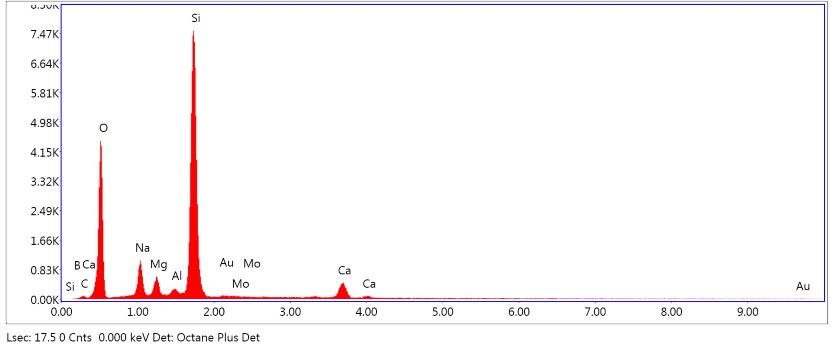
EDS graph
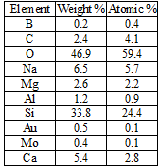
Elemental composition
Professor Apurbba Kumar Sharma of IIT Roorkee made the following comments on the paper: “There has been a progressively increasing demand for nanoparticles owing to the fact that they exhibit characteristics significantly different from those displayed by them in the bulk form. Consequently, they are highly effective in many applications. However, the intricacy of production and hence the associated cost of production appear as a deterrent while planning their applications. Therefore, it is the need-of-hour to develop innovative methods to generate nanoparticles, which are the cornerstones of nanotechnology. The present publication by Madhavi and Hiremath has adequately addressed the concern and presented a novel approach for the generation of borosilicate glass nanoparticles using an in-house developed μ-ECDM setup; the authors have shown characterization of the nanoparticles as well with the available techniques.”

Ms. Bindu
Madhavi J
Prof. Somashekhar S. Hiremath
He also impressed upon the novelty of the paper by stating the following main takeaways from the paper:
1. Generation of non-conducting borosilicate glass nanoparticles using µ-ECDM process.
2. In-house development of µ-ECDM experimental setup fitted with DC motor actuated gear reduction tool feed mechanism and processing cell capable of machining borosilicate glass.
3. Scientific explanations on effect, significance and contributions of the µ-ECDM process parameters on average particle diameter, shape, and distribution of the generated borosilicate glass nanoparticles.
Article by Akshay Anantharaman
Here is the original link to the scientific paper:
https://link.springer.com/article/10.1007/s12633-021-00986-9

